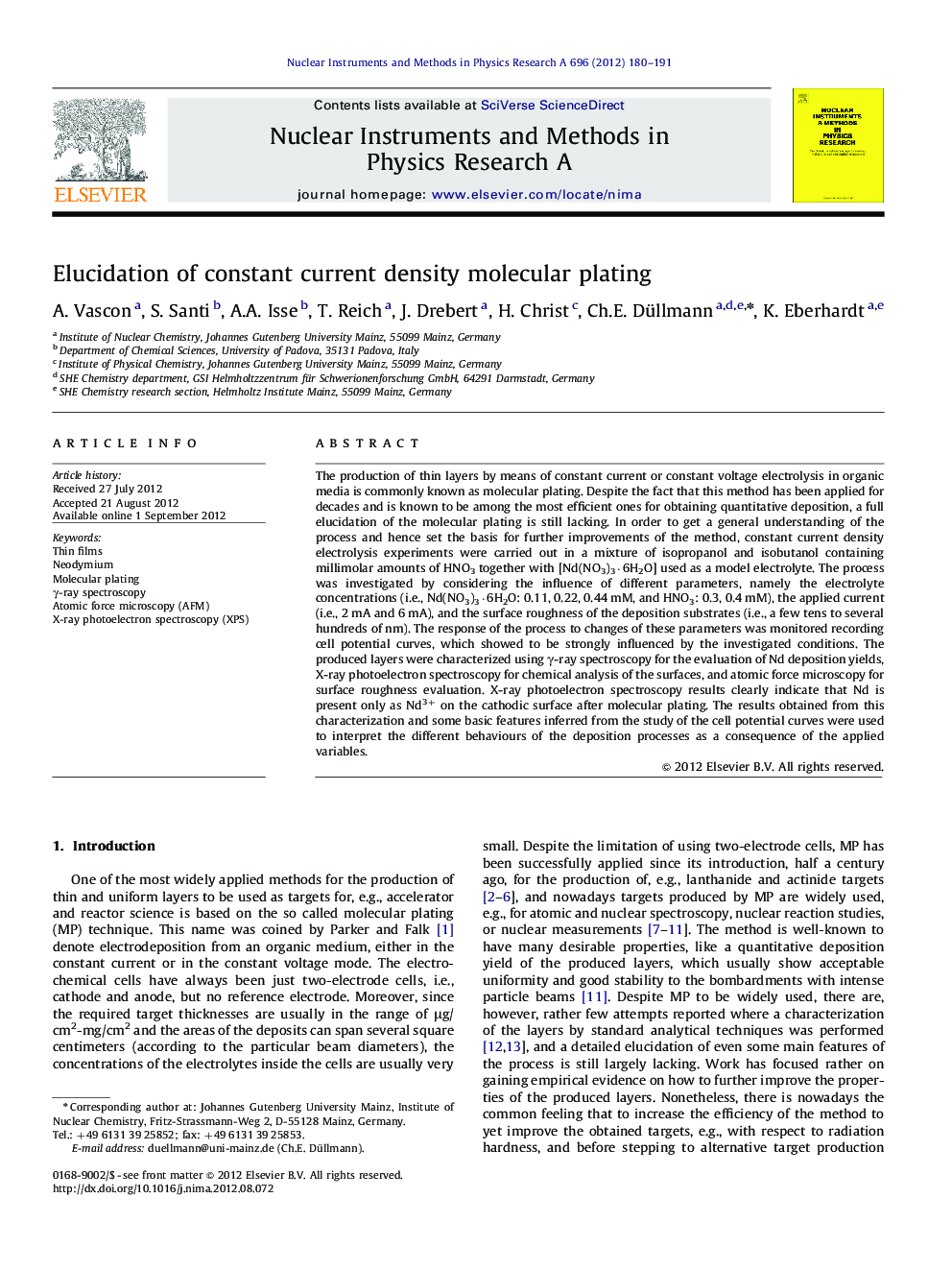| کد مقاله | کد نشریه | سال انتشار | مقاله انگلیسی | نسخه تمام متن |
|---|---|---|---|---|
| 1823476 | 1526429 | 2012 | 12 صفحه PDF | دانلود رایگان |

The production of thin layers by means of constant current or constant voltage electrolysis in organic media is commonly known as molecular plating. Despite the fact that this method has been applied for decades and is known to be among the most efficient ones for obtaining quantitative deposition, a full elucidation of the molecular plating is still lacking. In order to get a general understanding of the process and hence set the basis for further improvements of the method, constant current density electrolysis experiments were carried out in a mixture of isopropanol and isobutanol containing millimolar amounts of HNO3 together with [Nd(NO3)3·6H2O] used as a model electrolyte. The process was investigated by considering the influence of different parameters, namely the electrolyte concentrations (i.e., Nd(NO3)3·6H2O: 0.11, 0.22, 0.44 mM, and HNO3: 0.3, 0.4 mM), the applied current (i.e., 2 mA and 6 mA), and the surface roughness of the deposition substrates (i.e., a few tens to several hundreds of nm). The response of the process to changes of these parameters was monitored recording cell potential curves, which showed to be strongly influenced by the investigated conditions. The produced layers were characterized using γ-ray spectroscopy for the evaluation of Nd deposition yields, X-ray photoelectron spectroscopy for chemical analysis of the surfaces, and atomic force microscopy for surface roughness evaluation. X-ray photoelectron spectroscopy results clearly indicate that Nd is present only as Nd3+ on the cathodic surface after molecular plating. The results obtained from this characterization and some basic features inferred from the study of the cell potential curves were used to interpret the different behaviours of the deposition processes as a consequence of the applied variables.
Journal: Nuclear Instruments and Methods in Physics Research Section A: Accelerators, Spectrometers, Detectors and Associated Equipment - Volume 696, 22 December 2012, Pages 180–191